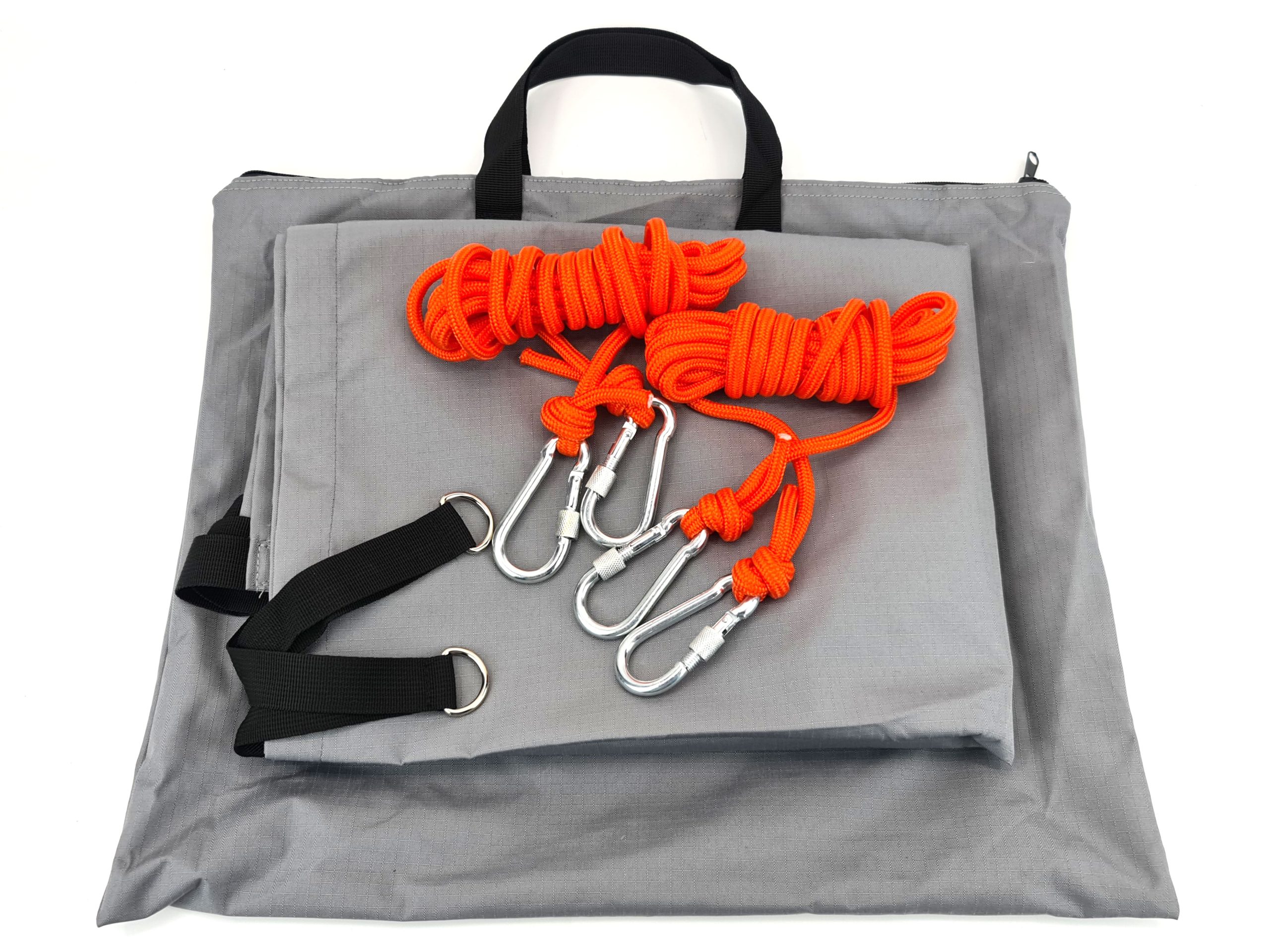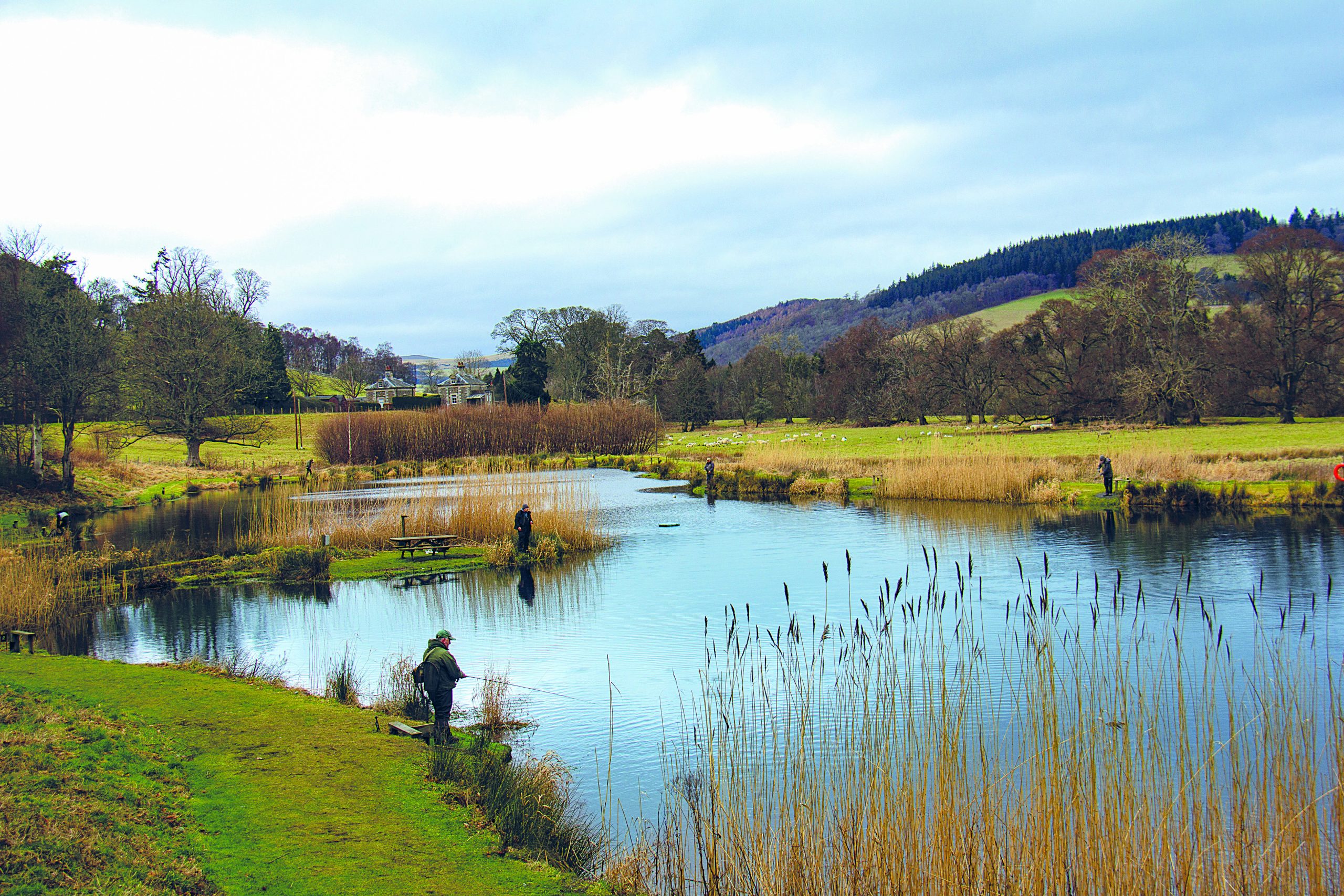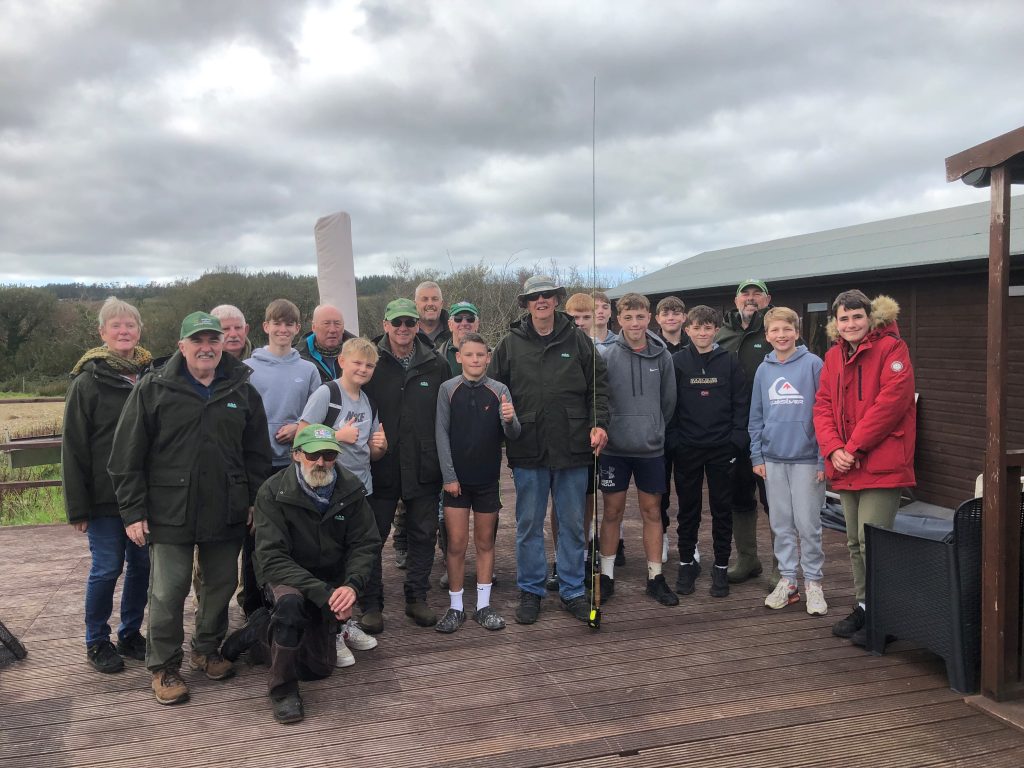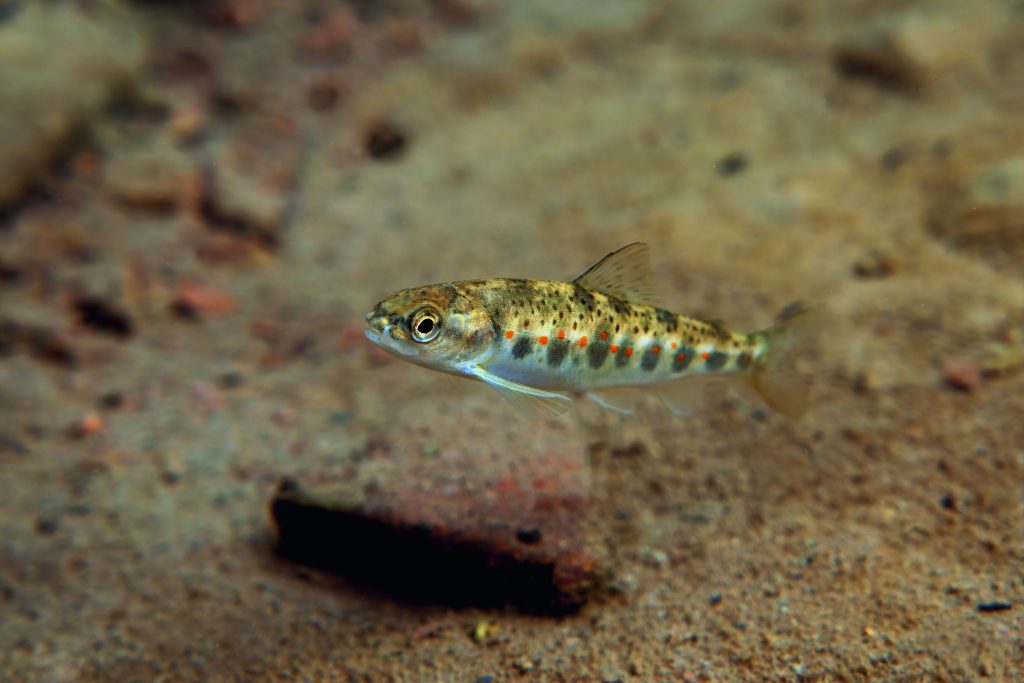RESERVOIR TROUT FEEDING PATTERNS THROUGH THE SEASONS
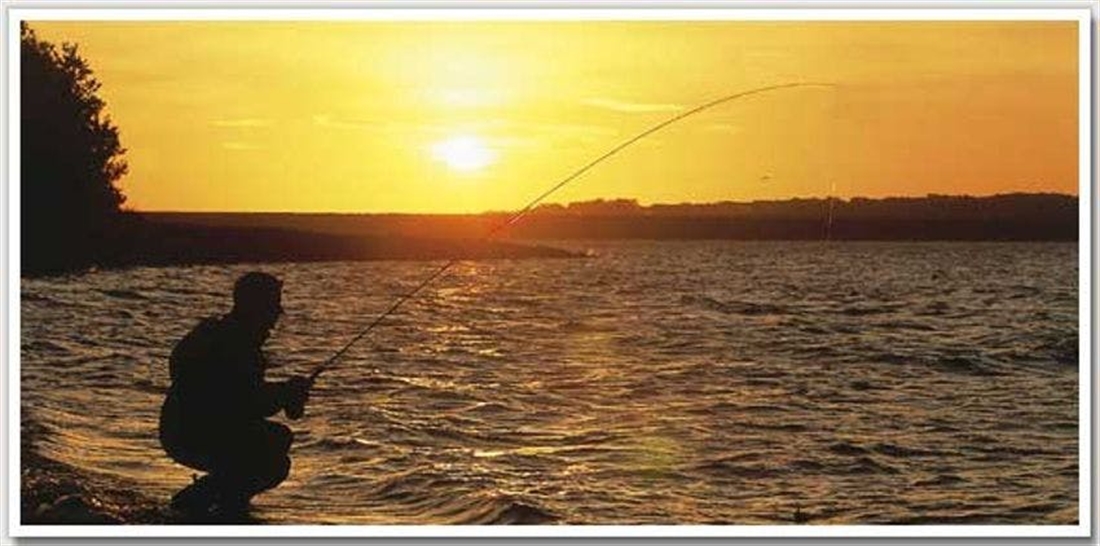
We’ve all had them. Those days when the fish simply will not take the flies that have been absolute ‘bankers’ for weeks. The reason for this is that the trout have entered the ‘transition zone’, when their diet and feeding habits adapt to the appearance of new food sources. In this informative feature, Iain Barr charts the changes you’ll need to be aware of during the course of a season to keep pace with the ever-changing feeding habits of reservoir trout.
EARLY SPRING
OPENING day can often be an angler’s paradise. You’ve waited all the closed season for this, so follow these simple guidelines and get ready to enjoy a frenzied attack on your flies!
Early season stocked fish remain shoaled up more than any other time of stocking throughout the season. Bred together in small trays, grown on in small cages in a tight community, experience and instincts keep them together. But where do they go when they are introduced to our lakes?
A mistake anglers often make is that early season stock fish swim up the wind in search of their first ‘wild’ snack. This is not true. Fresh fish stocked before opening day will more often than not ‘run’ down the wind, following bank contours as they go in search of their quarry.
So will they swim across deep open water at this time of year? Some may do, and I have often found some fish in Dickenson’s Bay on the north bank of Rutland Water, which have been stocked at The Transformer on the south bank of the reservoir, following a SW wind. But more often than not the Finches, downwind of The Transformer, is where the majority will be.
The fish have simply hugged the contours of the land at a uniform depth and are patrolling the 8-12 feet depth of water, ending up in the well-known rich feeding area of the Finches.
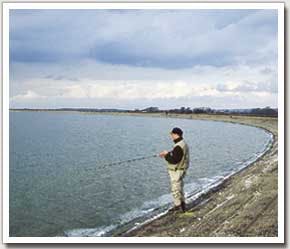
It’s important to fish in this 8-12 feet zone as this is where you’ll find the slightly warmer water and hence the first early season hatches of fly are likely to occur here. Ensure you are fishing a natural bank, preferably with a soft muddy bottom, suitable for aquatic insects to lay their eggs in.
One of the most consistent areas on Rutland for me and many others has to be East Creek. It is not stocked here but the fish stocked in the Sailing Club, simply swim down the wind, through the yachts, where the water is too deep for them, and come to rest in East Creek, which has a rich larder of food in a more comfortable depth of water for them.
If the wind is blowing into where these pre-season fish have been stocked, and it’s a suitable feeding ground, these fish will not move very far!
One of the most recognised places for this on the Midlands reservoirs is The Willows at the North end of Grafham dam. There is always an early season bonanza here as fish stocked at G buoy are kept in there by the prevailing SW wind, and are held there by the ready supply of early season buzzers hatching off one of Grafham’s best buzzer beds.
We’ll look at nymphs in greater detail in the next section, but there is no question that lure fishing rules opening day on the majority of waters. Fresh stocked fish are hungryïve, and competitive as they are shoaled up tight and all fighting for your offering.
Black and Green is an early season favourite and a slightly weighted tadpole will be hard to beat. Other dead certainties are the Cat’s Whisker and any orange lure. I tend to use large marabou tails and ‘kick’ the tail with a flick as I figure-of-eight it back to entice the fish to eat this irresistible mouthful.
However, fish can still be taken on the nymphs and I often use nymphs myself to ensure I don’t have an early return to the harbour as I have paid for a day’s fishing not an hour!
LATE SPRING
BY mid-April, more regular hatches are occurring and the fish are aware of this. Their feeding body clocks are being determined by these daily hatches. They have seen every lure in our armoury, so takes to the tadpoles are slowing up. The fish have changed their habits, so it’s time to change ours.
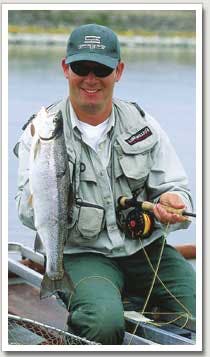
As the season progresses only a few weeks, the behaviour of the early season stocked fish changes right in front of you – sometimes surprisingly quickly! How often have you watched anglers empty the lake by fishing lures in the morning and then resorting to more slowly fished nymphs in the afternoon as the fish ‘wise up?’
The majority of the fish will generally still be in range of the bank angler, so keep looking for that depth of 8-12 feet. However, their feeding patterns are changing and the fish will have moved higher in the water column. They are now waiting for that hatch of buzzers that appear during the warmest part of the day – and you have to be ready for them!
Fish will still be caught on the tadpoles, especially the black and green varieties, but will become increasingly difficult during the hatch.
At the first sight of a buzzer, switch your tactics to a floater or a sinktip with a team of nymphs. Although you may have only just seen your first buzzer, the fish will have already been feeding on them below the surface as they climb up through the water column to the waiting swifts and swallows. This upwards migration of the nymph encourages the fish to move higher in the water, so when your takes dry up as the hatch starts, more likely than not, you’re now fishing beneath the shoal as the fish have followed the nymphs up out of the depths.
If I stop catching, before making any change to lines, flies retrieves etc, I simply work through the different depths first by counting down five seconds after casting, then 10 seconds, then 15 seconds and so on until you start getting takes.
It’s still generally too cold for the fish to be rising, so nymphs will suffice. A size 10 Black Epoxy Buzzer on the point, with two smaller ones in size 12 will almost guarantee success during the majority of buzzer hatches.
Try to find a cross-wind to allow your nymphs to drift naturally round in the wind. Better still, find a shallow bay of 8-12 feet in depth with a head wind and the fish will be within easy casting range. These early season fish will still be following the wind influenced by new introductions of fresh stock fish.
EARLY SUMMER
IT’S now that the insect action really hots up as a much broader range of flylife comes into play. But that doesn’t mean the fishing gets easier – in fact it can get harder because the fish have a much wider choice of food on the menu and tend to get more fussy as the summer wears on.
Early summer sees the fish start to disperse across the whole lake. I’m often asked why there are so few fish at the top of the arms on Rutland early season. The food here is plentiful but the fish don’t seem to appear here until June.
The water temperature has increased and most feeding is done near or on the surface, when the conditions are right: cloudy skies, a light breeze and mild temperatures are ideal.
The predominant wind in the UK is Westerly and the fish are simply ‘sucked’ out from the basin and drawn up the arms as they do the opposite of fresh stockies and head upwind in search of the their food.
Once they reach the top of the arms, why leave? The food options are just so prolific – ranging from buzzers in their millions to the darting corixa in the shallows.
As we’ve already seen, in early season the food is found in the warmest water on the downwind bank, which is why you’ll also find the fish there.
But with the onset of summer, ideal water temperatures can be found right across the lake and the fish are on the move and fast!
Keen to make the most of the prolific hatches, they simply go in search of food, heading up the wind and intercepting whatever comes their way. At this time of year you can watch fish as they cruise through the surface and casually sipping down the naturals they find in their path.
The only exception is in a complete flat calm when it’s very important to be able to recognise the direction in which the fish is heading as it rises.
The fish are almost always in the top layers now, looking for that easy meal and lines like the floater and slime line will be sufficient for most fishing situations this time of year. To increase your chances, look for wind lanes. These are areas of flat, glassy water resembling oil slicks, usually only a few yards wide but sometimes stretching right across even the biggest of reservoirs.
All manner of insects get trapped in the tight surface film, making them easy targets for the trout. Fish will almost certainly patrol these ready-made larders and, when guiding, my simple rule is: never ignore a wind lane from mid May onwards.

Look for signs of fishy activity as the trout learn to sip trapped insects from the surface film.
It’s also important if you’re bank fishing to be looking for a ‘back wind’ or cross-wind to ensure fish are being drawn to you. A head wind will simply be drawing the fish away from you and towards ‘Fred’ on the other side of the lake!
However, with the fish now spread across the lake, and the chances of those early summer scorchers ever increasing, fish can also be found right down in the depths.
Daphnia, a tiny water flea explodes into a soup-like meal for the trout and as the sun rises, this tiny protein enriched crustacean descends to escape the sun’s rays. If the surface hatch activity is minimal, despite perfect cloudy mild conditions, the fish will readily stay sub-surface to gorge on this easiest of meals. Not boasting the best fly hatches, Grafham still out-guns most reservoirs for trout that grow heavy on this protein-rish ‘soup’. Fish stocked at 2lb in the early season are a fighting fit 4lb by late summer as the high protein helps them pack on the pounds, literally!
With such a rich source of food readily available, surface activity can be almost non-existent as long as good daphnia blooms are to be found. Trout will follow the daphnia as it rises and falls as the sun dictates. As a rule, if sunny fish deeper, if cloudy fish nearer the surface.
This is the most exciting time of year for me, as nymph fishing is my favourite method. Patterns like the Cruncher, Diawl Bach, Black and Green buzzers in size 12 are certainties for a good day’s sport. If the fish are right on top, I like to use Black and Ginger Shipman’s Buzzers or a single ‘Sugar Cube’ Hares Ear. For the daphnia feeders it’s hard to beat the Orange Blob or the new Flexi-Blob I created last year.
HIGH SUMMER
HIGH Summer – July through to August are often referred to as the doldrum months. Remember that the rainbow trout is an imported species and basically a cold water fish.
High water temperatures simply make the fish lethargic and many head for the depths to find the cooler water so that’s where a lot of the action takes place – unless you’re prepared to get up early.
As the sun beats down the daphnia dives for cover. As the daphnia dives to escape the sun it hits the cooler water, and yes, you have found the perfect match. Food at the right water temperature means the fish won’t be far away. I recall fishing Bewl Water in 2002 where the reservoir was like a lukewarm bath. To catch I had to fish a Di-8 line almost vertically beneath the boat across the deepest part of the lake. I caught eight superb trout all on buzzers 35-40 feet down. Some anglers managed to catch on dries across the surface, but the better bags came from the depths.
When bank fishing in high summer, it’s important to beat the dawn chorus! Aim to arrive at your venue as early as possible as fish will readily feed in the cooler morning temperatures, only to sulk as the temperature rises.
Head for deep water or a dam wall, which generally puts deeper water well within reach of the bank. As the day warms up, the fish head down and out of reach of the bank angler.
But as Arnold Schwarzenegger says, ‘I’ll be back’. Yes, as the day cools the fish will move back in to feed, so head back to the water for those last two hours or so.
Although the majority of their diet will be daphnia where it can be found, many fish will be feeding on the explosion of pin fry at this time of year. These tiny little fish can appear almost anywhere around the lake and the fish seem to lose all natural instincts as they make hay whilst the sun shines.
I fished Grafham last year and took Mark Sutcliffe, editor of TF, out for the day. It’s fair to say we had only about six fish to the boat but the water was boiling with grown-on fish around us all day. This can be a terribly frustrating time as the fry are too small to imitate! They will test your skills to the limit but a Sparkler Booby and two small Hare’s Ears usually fools a few of them. One of favourite methods for these is a small Hare’s Ear Sugar Cube twitched through the surface.
If this becomes too frustrating, on reservoirs that have aerators, head for the ‘boils’. This is an area where water and oxygen are pumped into our reservoirs. Whether you are fishing the most northern of reservoirs or the most southern, in high summer these areas will always hold fish. I remember fishing one of my favourite venues, Chew Valley in Bristol, and struggling. I was out with local expert angler Gary Haskins and was struggling in the high summer heat so we headed for the boils between Denny Island and the Dam. Fishing fast sinkers and a Blob teamed with nymphs, we caught some of the grown-on, hard fighting rainbows for which Chew is renowned.
Rutland, Grafham and Bewl are also prolific ‘boil’ hotspots but be prepared to mill around with many other keen anglers for this precious space – known as doing the ‘boil okey-cokey!’
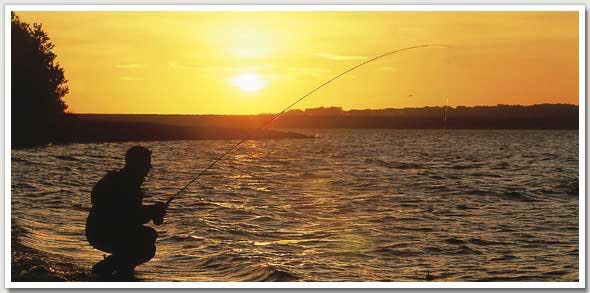
In the heat of high summer, it pays to fish early or late. Follow the fishs example and take a siesta during the day!
AUTUMN
AS autumn approaches it’s almost as if someone switches on the body clocks of the trout. They sense the winter approaching and the need to pack on body weight to see them through. Small buzzers and larvae are simply not sufficient to gain the much needed body weight so their diet again takes a drastic change.
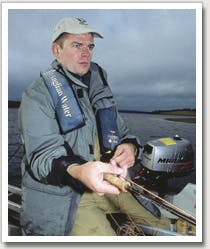
Fry and corixa are high on the trout’s agenda, all to be found close to the shore. As the water temperatures fall, the fish move into the shallower water to hunt the fry into a frenzy.
It’s important to look for ‘structure’ where the fry will hold. Boat moorings, weed beds and dam walls are all good hotspots for fry feeders. Also look for seagulls, which are often a good indication of where the shoals of fry – and the trout – are.
Upturned swans are a good bet for corixa-feeders as they disturb the rich larder that hides in the weeds. One tip I picked up from Rutland expert Dave Doherty several years ago is either to wade or take your boat through the weed beds and return just a few minutes later. By doing this, you have disturbed all the food in the weeds and rest assured the trout will be feeding on it. A Minkie or a team of Diawl Bachs will readily catch these fish.
First light can be prolific for fry feeders and a Floating Fry out-fishes a Minkie for me. Trout will just see the silhouette and take it with confidence but as the day lightens they have time to study your offering which often results in swirls beneath your fly as the fish refuses your artificial. Many of my best bags of trout last year on the Floating Fry all came within the first hour of light. I took five grown-on fish off Grafham dam last year before 7.15am with the sun rising around an hour before that. After 7.15 you wouldn’t have thought there was a fish in the lake, so get out of bed and get there early!
WINTER
MANY people pack up their tackle as winter approaches but sport continues right through to December. Fishing can be at its easiest as the fry feeding frenzy continues. Don’t miss out on it!
The fast-pulling days of the summer are gone. The days of fishing 30 feet down are gone. This is the bank anglers’ paradise. Large fish are well within reach of the bank angler and are at their most vulnerable as the need for body weight puts them off their guard. Fry are the number one target so be well-equipped with Minkies and Floating Fry. As the water temperature cools the Minkie out-fishes the Floating Fry when the cold nights leave a cooling mist ghosting over the surface of the water. Always add a small piece of weight to the Minkie to allow it to sink and often fish will take the Minkie on the drop as the fish reacts to the plop of the fly.
Continue to look for structure, anywhere your fry can take cover from the barrage of trout attacks. Slow your retrieve down to almost static as the fish are now looking for maximum protein with the minimum of effort.
As the day warms there is often a late hatch of small black buzzers and a switch to a team of nymphs can pay dividends. I have taken several winter limits off Yellowstone Creek at Rutland on small Black Buzzers fished on a floater. This window of opportunity can be brief – so make the most of it.
Try and fish into the wind or on a cross-wind, as you would early season, as this is where the warmest water will be and where any hatches are likely to happen.
So when the calendar reaches October, don’t put that tackle away, some of the best fishing of the season is yet to come!
I look forward to seeing you out on bank or boat throughout this season whether it’s during high summer or on the coldest days of winter!



